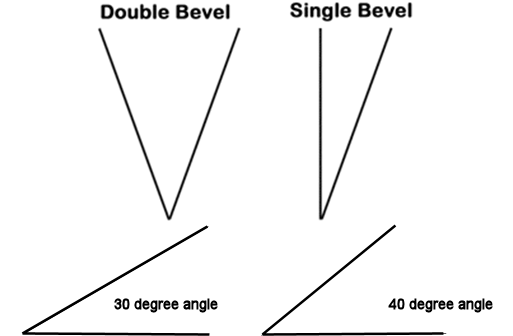Sharpening and Maintaining Your Garden Tools
Notes prepared by Scott Hitchins, 2025
A correctly sharpened and maintained garden tool will not only last longer but will be easier and safer to use. Most garden tool are designed to cut in one way or another; A sharp edge will greatly reduce crushing and splitting of roots and stems so, a sharp tool means lower incidence of disease entering the plant through cuts that cannot heal cleanly.
Wear eye protection and heavy gloves when using any sharpening equipment to protect against metal slivers.
There are many publications providing advice on how to look after your garden tools. Here are the essentials:
Start by removing any soil from your digging tools after using them. A quick spray with a hose will usually do the trick, but stubborn clays etc can be scraped of with an old knife or chisel, or even one shovel used to scrape another.
Ensure tools are dry before storing to prevent rust and rot. Some gardeners keep a tub of sand mixed with oil to plunge their shovels into after use. While this is very effective for rust prevention, use a mixture of sand and vegetable oil, rather than the traditional motor oil or old sump oil which can introduce harmful chemicals into your soil.
Once or twice a year, sand the handles of shovels and other tools, if necessary, before oiling: Use a rag to rub wooden handles with linseed oil or a 50/50 mixture of linseed and turpentine.
Adding the turps makes the oil dry much faster. Boiled linseed oil contains other chemicals, while Raw linseed oil takes the longest to dry.
NOTE: Linseed oil produces heat as it dries, so make sure that the rag you use is spread out to dry. If you leave it scrunched-up, it can burst into flames!
After using your secateurs/pruners, shears, and loppers wipe them oily rag or you can dry them with a clean rag, and then spray lightly with a penetrating oil such as WD40®. If using an oily rag, keep it handy in you tool shed in a lidded container, such as a yogurt tub. A food-grade mineral oil is idea. ‘Baby oil’ is just mineral oil with a fragrance added and is cheap and easy to obtain. When using secateurs and other tools, you should sterilise them before moving on to another plant, to reduce the spread of disease in your garden. A spray bottle containing methylated spirits is an easy and safe way to do this. Using diluted bleach is also effective, but less safe for you and the environment and, let’s face it: which would you rather have leak in your pocket?

Sharpening tools
Pruning tools, such as Bypass Secateurs and grafting knives will only have a bevel on one side and should only be sharpened on that side. The same is true of many garden tools. The less-common Anvil Secateurs have a bevel on both sides and should be sharpened on both sides.
Sharpen your cutting tools, including shovels and spades regularly. A whetstone or medium file can be used, but half a brick or a clay paver does an excellent job on shovels, mattocks, and hoes while, in a pinch, an upturned coffee mug will sharpen finer tool such as secateurs and knives. A file can be used to remove nicks from shovels and other large tools. An electric bench grinder can heat-up the metal too much, literally causing it to lose its ‘temper’ (the origin of the saying), resulting in a softer edge which will not stay sharp for as long.
Spray nozzles and related which have been used for spraying organic or chemical sprays should be washed with clean water immediately after use: Fertilisers and other chemicals will rapidly corrode any metal parts and many preparations, such as Curly leaf spray, will leave a crusty residue as they dry, blocking fine pipes and nozzles.
Saw maintenance
Most saws sold these days, including pruning saws, have hardened teeth. This means that they cannot be sharpened with a normal metal saw file which has the same hardness. Therefore, you would need to buy a diamond file, which will often cost more than the saw.
- Pruning Saws: Keep clean with a nailbrush. Dip it into methylated spirits or tea tree oil to sterilise it before pruning other plants.
Removing Sap
Pruner blades that are clogged with sap will cut poorly and sharpening can clog up your stone or diamond hone. Start with metho on a rag, but if blades are particularly ’gummy’, use a stronger solvent, such as White spirit or turps. After cleaning with strong solvents, wipe over WD40, linseed oil, or mineral oil to prevent rusting.
Preventing and Removing Rust
Making sure tools are dried thoroughly before storing and treating them with linseed or mineral oil are the best ways to keep tools from getting rusty. But, if you do discover some rust on your tools, here’s what you can do to get them back in working order:
- Soak in a 50/50 vinegar and water for several hours or overnight.
- Scour in a circular motion with steel wool.
- Rinse well
- Let dry thoroughly, then apply your choice of oil.


